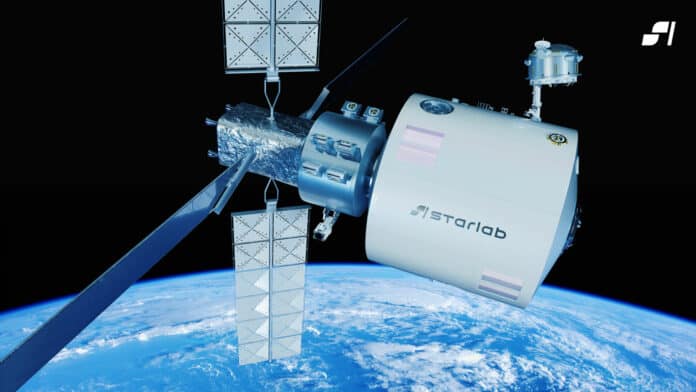U.S. based Space exploration company Voyager Space, and European aeronautics and space company Airbus Defence and Space, are collaborating to develop, build, and operate Starlab, the first continuously crewed, free-flying, commercial space station planned to succeed the International Space Station to serve NASA and space agencies around the globe.
The collaboration will bring together world-class leaders in space and American and European interests in space exploration. In addition, Starlab will have a European Joint Venture subsidiary to serve the European Space Agency (ESA) directly. The space station will house NASA and ESA astronauts conducting microgravity space experiments.
Leveraging innovative technologies, Starlab is designed with an accessible infrastructure to promote research, scientific discovery, and industrial activities in microgravity.
Starlab’s primary structure consists of a large inflatable habitat to be built by Lockheed Martin and a metallic docking node. The space station will also have a state-of-the-art laboratory system to host comprehensive research, science, and manufacturing capabilities. Starlab is being designed to support four astronauts to carry out critical science and research in a volume of 340 m3. The station also has a 60-kW power and propulsion element, a large robotic arm for cargo, and external payload servicing.
“We are proud to charter the future of space stations with Airbus,” says Matthew Kuta, President at Voyager Space in a statement. “The International Space Station is widely regarded as the most successful platform for global cooperation in space history, and we are committed to building on this legacy as we move forward with Starlab. We are establishing this joint venture to reliably meet the known demand from global space agencies while opening new opportunities for commercial users.”
“Today marks a major step forward for the future of commercial space destinations,” continues Kuta, “We are proud to have NASA’s trust to build the replacement for the ISS, a partnership that expands Starlab’s ecosystem to global space agencies and a team that is mission-driven and dedicated to reimagining the future.”
Airbus will provide technical design support and expertise for Starlab but did not disclose additional details about the partnership or financial terms.
Part of NASA’s Commercial Low Earth Orbit Development Program, this SAA lays the foundation for building StarLab, a continuously crewed, free-flying space station to serve as a global customer base of NASA and space agencies and researchers. This space law agreement is the first of two phases in which NASA aims to maintain a U.S. presence in low-Earth orbit (LEO) by transitioning from the International Space Station to other platforms.
NASA announced it had selected Nanorax as one of three companies to develop designs for the space station and other commercial spaceships. Voyager was awarded a $160 million Space Act Agreement (SAA) from NASA in December 2021 by Nanorax, part of Voyager’s Exploration Division.
The Starlab space station is expected to be operational in 2027.
